Jump to:
Want to grow long, relaxed hair? Look no further because this guide will teach you everything you need to know to help your relaxed mane thrive.
Gone are the days of split ends and thinning edges because processed hair doesn’t mean unhealthy hair if you’re treating it right.
What Is Long Relaxed Hair?
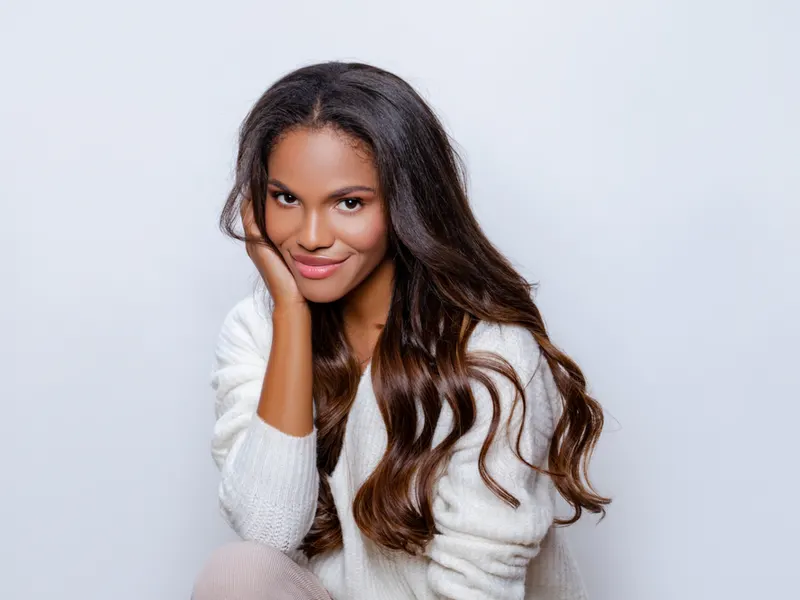
L Julia/Shutterstock
Relaxed hair is wavy, curly, or coily hair. Think 2A to 4C hair types that are chemically processed to loosen the follicle’s curl pattern, making the hair straighter and more “manageable.”
The chemicals in a relaxer lift the hair follicle’s cuticle and penetrate its cortex, permanently breaking down the bonds that cause the hair to coil.
It’s best to go to a professional or someone with lots of experience in relaxing hair. Otherwise, you risk injuring your scalp and losing hair. However, when hair is relaxed correctly, you can have the healthy, long relaxed hair of your dreams.
In this guide, you’ll learn about:
- Hair relaxers for different hair types
- How often you should be relaxing your hair
- Protein balance: why it’s key to long relaxed hair
- Maintaining long relaxed hair from the inside out
- The ideal regimen for long relaxed hair
At the end of the article, you’ll find answers to some frequently asked questions that you may also have.
Hair Relaxers for Different Hair Types
Hair relaxers come in different strengths; the one best for you will depend on your hair type and texture.
Mild Relaxers
Mild strength relaxers are best for hair that shows signs of damage, i.e., split or ‘broken’ off ends or hair that’s been color-treated. Mild relaxers are also a good option for people with fine hair.
Normal Strength Relaxers
Normal strength relaxers are the most commonly used category because they’re suitable for a broad spectrum of hair types, including medium to thick textured hair. It works best on ‘virgin’ hair that’s not chemically processed yet.
Super Strength or Extra Strength Relaxers
As its name implies, super or extra strength relaxers are the most concentrated of the bunch, and they will best suit very thick and coarse hair types.
Stylists can be hesitant to use extra strength relaxers, fearing the risks they could have on their client’s hair and scalp. In most cases, it’s possible to achieve their clients desired look using normal strength relaxers.
Read Next: Best Hair Relaxers for Natural Hair
How Often Should You Relax Your Hair?
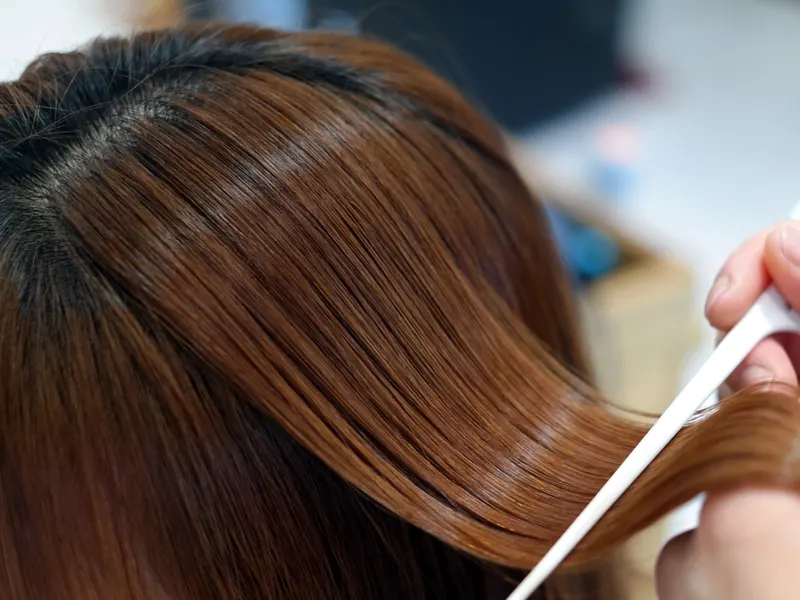
Hyung Min Choi/Shutterstock
It’s crucial to avoid relaxing your hair too often. It can damage your hair, causing breakage, thinning edges, and just the opposite of long relaxed hair.
You’ll want to see at least half an inch to an inch of new hair growth where you’ll apply the relaxer; this could take 8-10 weeks. If your hair grows faster than average, this could be as early as six weeks.
When retouching a relaxer, it’s crucial that your stylist or, whoever is doing your hair, refrain from applying it to previously relaxed hair. Any further chemical processing to hair that’s already relaxed can cause the strands to weaken and fall off.
Protein Balance: Why It’s Key to Long Relaxed Hair
No matter your hair porosity before you apply a relaxer, the chemically treated hair will become more porous, making it more prone to breakage.
Highly porous hair typically requires more protein to maintain its structure than medium or low porosity hair. So, you’ll need to implement protein treatments in your hair care regimen if you want long, relaxed hair.
Start by applying a protein treatment once a month and observe how your hair reacts. If your hair feels a bit stiff, you can space out your protein treatments a bit more; and apply it every six weeks, or more, depending on the condition of your hair.
However, suppose you notice that your hair is shedding more than it usually would, considering your relaxers were correctly applied. In that case, this may signify that your hair is protein deficient.
Read Next: Super-Simple Hair Porosity Quiz
Maintaining Long Relaxed Hair From the Inside Out
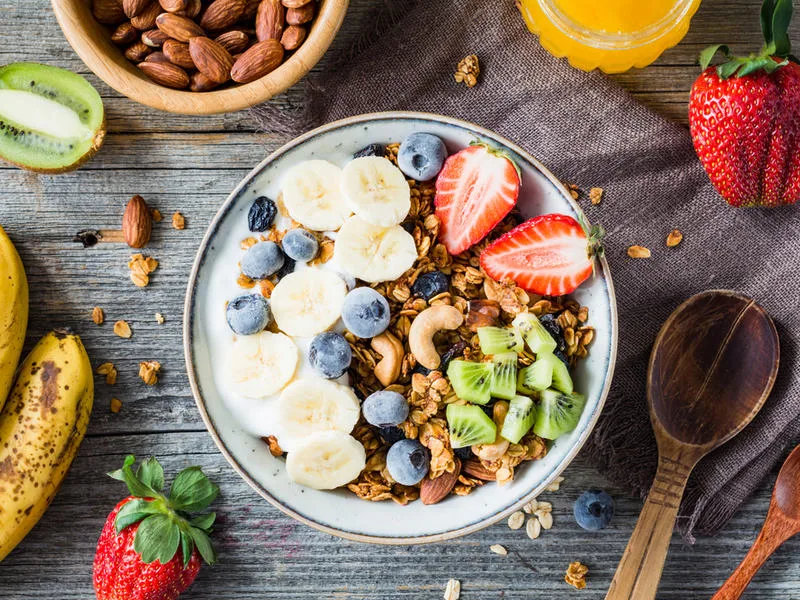
Vladislav Noseek/Shutterstock
There’s no way around it. No matter how many fancy serums and deep conditioners you apply to your hair, your lifestyle and genetics will ultimately have the most significant impact on your hair’s health.
While you can’t change your genes, you can control what you eat, how much and how often you move your body, and your sleep hours.
Diet
Applying protein topically to the hair can be beneficial in maintaining long relaxed hair. Still, even more so, you want to be sure that you’re consuming enough protein through your diet.
Good protein sources include lean meat, chicken, fish, eggs, legumes, and soy products. Besides protein, you want to ensure you’re getting sufficient vitamins and minerals essential for hair health.
These include iron, biotin, zinc, vitamin C, magnesium, and fatty acids, which you can get through eating a balanced diet or a multivitamin. Often problems like hair loss or hair that’s brittle and lacks shine can be fixed by simply improving your diet.
Exercise
Exercise also benefits long relaxed hair by increasing blood flow to the scalp. Increased blood circulation to your scalp will supply more oxygen and nutrients, resulting in a luxurious mane of hair.
The World Health Organization recommends that healthy adults get at least 150 minutes of moderate-intensity aerobic exercise a week.
Alternatively, you could do a minimum of 75 minutes of high-intensity exercise. So exercising at least 30 minutes, three times a week will keep your long relaxed hair flourishing.
Sleep
This tip may not be that obvious, but sleep also significantly impacts hair health. A good night’s sleep restores the body and triggers the release of growth hormones and different enzymes that promote hair growth.
So before you invest in expensive collagen supplements, make sure you’re getting the recommended 7-9 hours of sleep a night.
The Ideal Regimen for Long Relaxed Hair
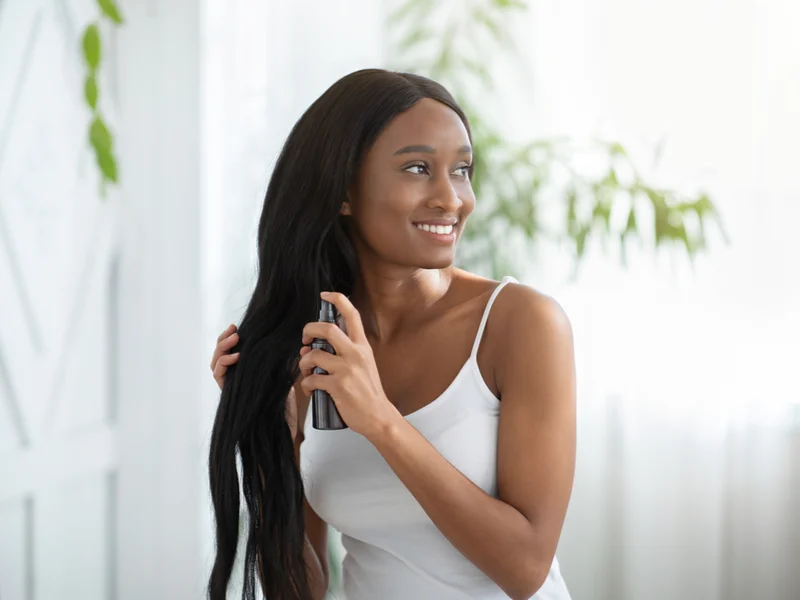
Prostock-studio/Shutterstock
Now that you have relaxed hair, you will have to adapt your hair regimen accordingly. You can follow this regimen for long relaxed hair and tweak it to your specific needs.
Wash Weekly
Wash your relaxed hair at least once a week with a gentle shampoo. You may need to wash your hair more often if your scalp is on the oilier side and if you sweat a lot or do water sports.
It’s best to wash your hair with a clarifying shampoo once a month to clear the hair follicles of any product build-up that may have accumulated from moisturizing and styling products.
Deep Condition
There’s a lot of talk around protein for growing long relaxed hair, but moisture is just as essential. Your locks may benefit from a weekly to bi-weekly deep conditioning treatment, depending on the condition of your hair.
Read Next: How to Moisturize Relaxed Hair Without Weighing It Down
Moisturize Between Washes
Keep your hair moisturized between your weekly washes. You can use your favorite leave-in conditioner for relaxed hair. Moisturizing your hair will keep your hair from becoming too dry and lackluster between washes.
Protein Treatments
Protein treatments can work wonders on dull relaxed hair, as mentioned before. Experiment with how frequently you apply protein to your hair, starting from monthly to bi-monthly, depending on how your hair reacts. Less is more; using protein treatments on your hair too often can result in stiff hair.
Don’t Skip Trims
This recommendation may seem counterintuitive, but trimming the ends of your hair will help you grow long, relaxed hair. While some recommend trims every 6-8 weeks, you can cut your ends every 8-10 weeks because you’re aiming for length. This frequency should be sufficient to prevent split ends.
Prep Relaxed Hair for Sleep
As much as you’d probably like to throw your head on your pillow and start counting sheep, it’s important to prepare your locks for a good night’s sleep. It doesn’t have to be time-consuming.
It could be as simple as applying a light moisturizer and covering your hair with a silk scarf or bonnet. Bonus points if you also sleep on a silk pillowcase and wear a silk bonnet, as this will prevent any friction that could potentially damage your strands.
Live a Healthy Lifestyle
Make an effort to eat a balanced diet rich in vegetables, fruits, whole grains, healthy fats, and protein. If you know you’re not eating enough fruits and vegetables, you can supplement with a multivitamin. Try low-carb protein shakes or protein bars for days you know you could use the extra protein.
Frequently Asked Questions
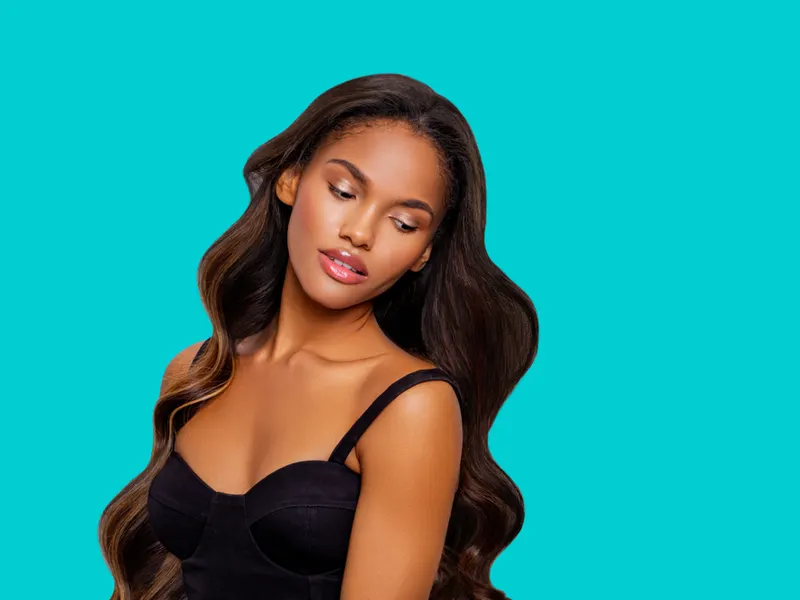
L Julia/Shutterstock
Why are my edges thinning?
Thinning edges can result from many things. One could be friction, which you can prevent by avoiding tight styles that pull on your hair’s edges and sleeping with a silk bonnet at night. Also, make sure that you’re waiting long enough between relaxing touch-ups.
Be sure that the person applying your relaxer has adequate experience.
You don’t want the relaxer applied to the parts of your hair that were previously relaxed. You also don’t want the relaxer to stay on your hair for longer than required, and this can burn your scalp and cause your edges to thin.
How long does relaxed hair last?
A relaxer will permanently keep your hair straight. However, you will need to touch up your roots every 6-10 weeks, depending on how fast your hair grows.
Is relaxed hair healthy?
Like any other processing treatment, i.e., color-treated hair, you can have healthy relaxed hair by following a suitable haircare regimen and maintaining a healthy lifestyle.
Do relaxers damage your hair?
Not when applied correctly. Relaxers can definitely cause damage, even irreversible damage, to the hair and scalp when not used correctly and if the hair isn’t correctly cared for between relaxing sessions. This is why it’s crucial to have your hair relaxed by a professional and maintain a healthy hair care regimen between touch-ups.
What happens if I stop relaxing my hair?
Nothing. If you decide that you no longer want to relax your hair, you can stop doing so. Your virgin hair roots will grow in, and you’ll have two different hair textures, curly at the roots and straight at the ends.
You could blow dry or press your roots straight to make your hair textures more uniform. Alternatively, you could cut the relaxed ends of your hair all at once, also known as “the big chop,” or trim your ends every few weeks until you cut off all of the relaxed hair.
So, What Is Long Relaxed Hair?
Long relaxed hair is curly hair that’s chemically processed to be straight. When hair is relaxed correctly and maintained well between relaxing sessions, it’s possible to achieve long, relaxed hair that is healthy and lustrous.
Now you have all the information you need to embark on your journey to long relaxed hair. With a bit of tender love, care, and a healthy amount of patience, you’ll have the hair you’ve always wanted.
